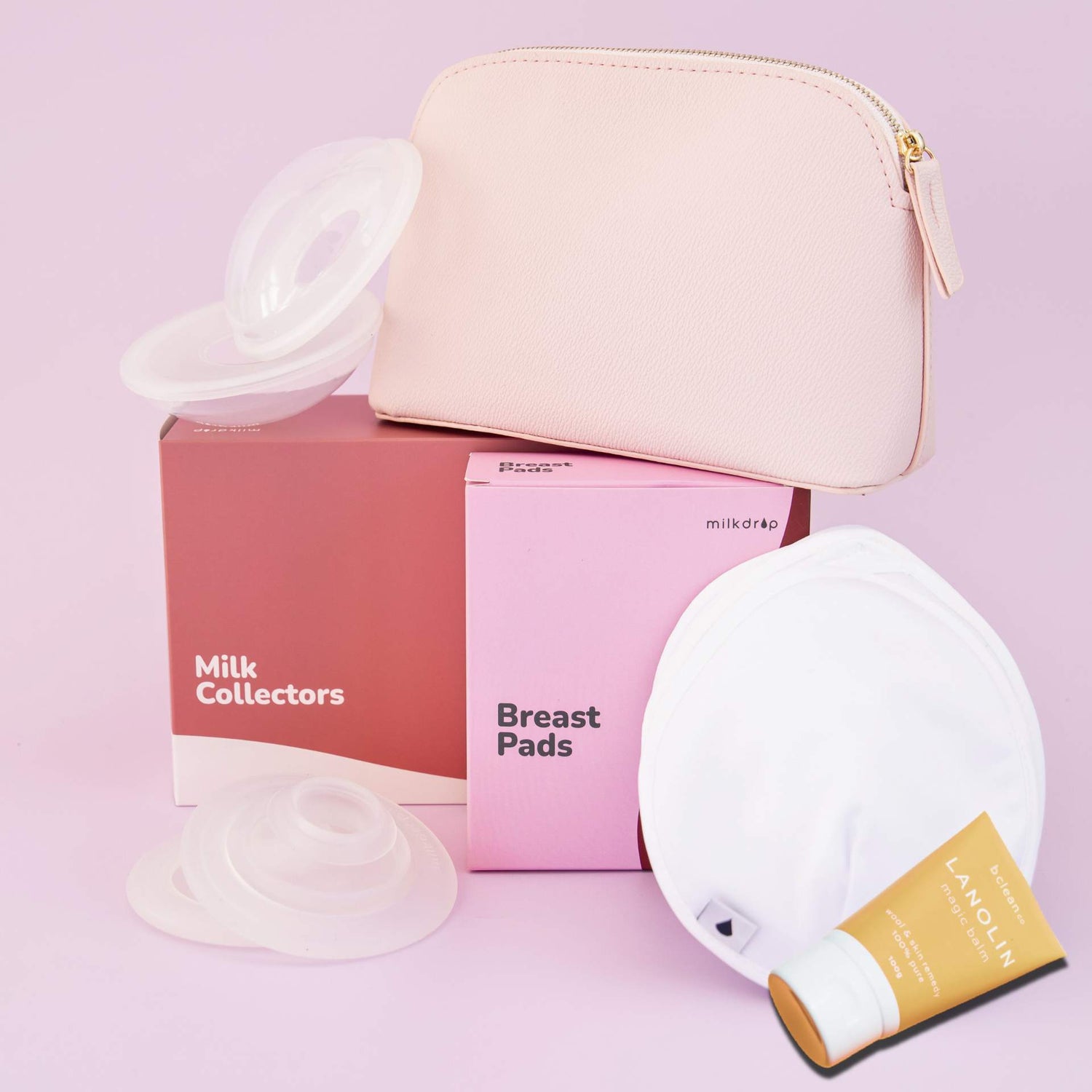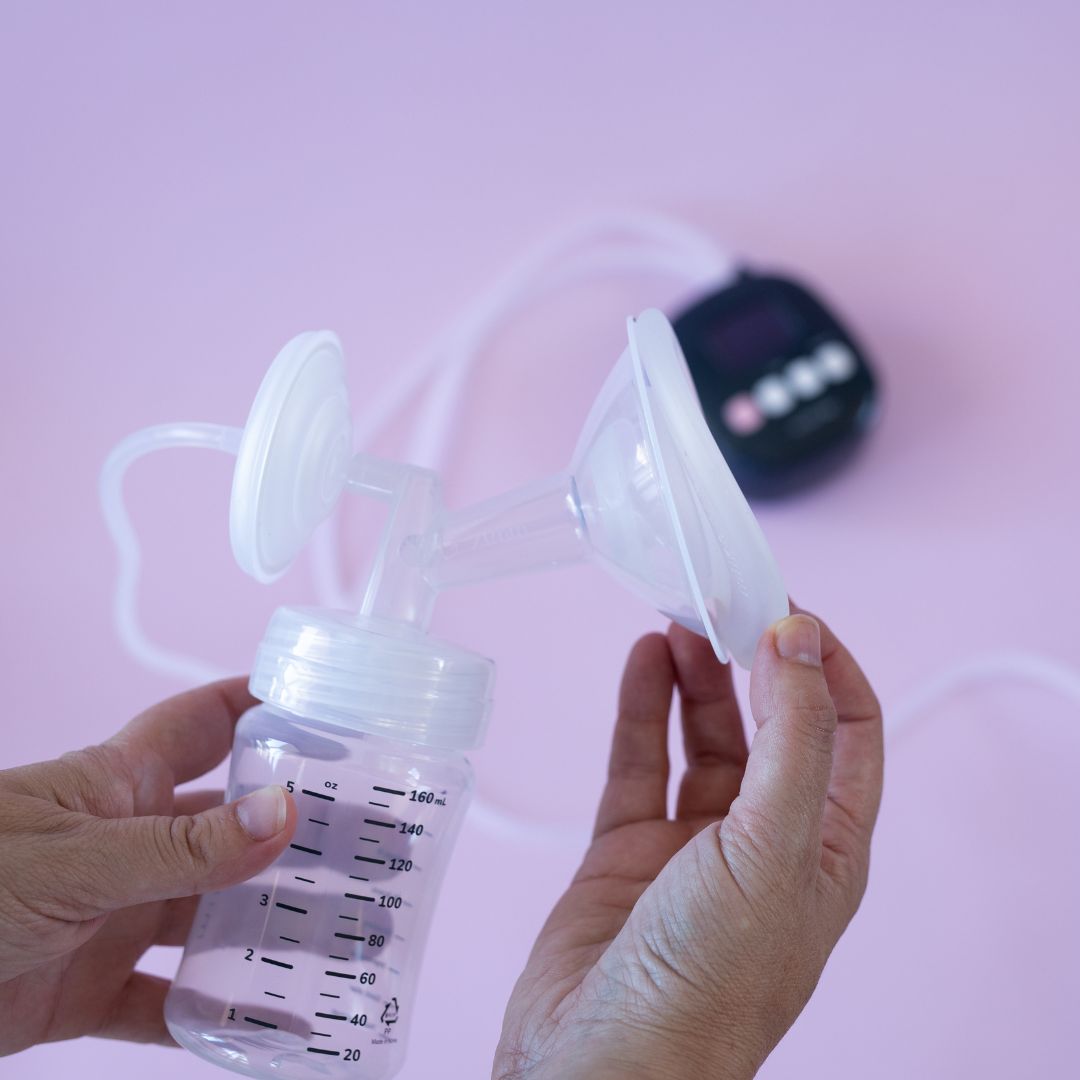Even if you're mostly happy with your milk supply, there's always room to try to be more efficient during each pump session.
Here's a rundown of how to increase your milk volumes.
Before we start, there's a difference between increasing your overall supply, and increasing your pumping volume during each pump session. We'll cover both here.
Let's go!
Part 1: Increasing your supply in long term
In general, to increase your supply, you need to remove more milk from your breast more often. Unfortunately this means pumping more often, especially if your baby isn't latching effectively at your breast yet. In the first few weeks, you may need to pump after each feed (if you can). Once lactation is established, you can start to consolidate some of the sessions. Some people nurse and pump, some people pump exclusively, many people top-up with formula too. Remember, pumping is a LOT. Many people who are able to make it work, have loads of extra support or circumstances that can help them achieve it.
A few tips:
Pump often
Pumping more often, at shorter durations is thought to be more effective than pumping less often for longer.
Time your sessions
There's mixed evidence for when to do your extra pumping. Some say to pump directly after a feed, others say to wait a few minutes. Given there's not much evidence either way, do what fits into your routine, or what seems to work best for your supply.
Try for healthy diet
Your breastmilk production is pretty resilient, but a healthy diet and staying hydrated always helps.
Keep a log
If it doesn't stress you out, try to log your minutes on the pump each day. Keeping a log or a diary can keep you on track.
Notice your progress
Although the marketing is very appealing, there's no pump, lactation aid or even food that can genuinely claim to produce more milk for everyone. Everyone responds differently to different diets and pumps - so take notice of how your body responds and go with that.
Part 2: Increasing your volumes or milk flow in a pump session
You will pump more milk if you increase your supply using the method above. But there are still some tricks to be more effective during each pumping session.
Here they are:
Double-check your flange size
A good fitting pump or cushion will be more comfortable and effective at removing milk.
Hand compress while you pump
It's convenient to pump hands free (and you may not have time to do this), but gentle massage of your breast while you pump can help to stimulate more milk. You can use your lactation massager here. Choose the lightest massage setting, and place it against your flange to vibrate it or against your breast above your pump (tuck it into your bra strap). Never use the massager to do deep massage or to try to fix blocked ducts or mastitis.
Warm your flange
Researchers found that using a warm breast pump shield increased the efficiency of milk removal for women who used shields heated to 39°C (102°F). Quite simply, the women who used heated shields collected more milk in the first 5 minutes than the women who didn’t. After that it evened out, but it’s worth a try! If you do warm your flange or milkdrop cushion or breast before your next pumping session, make sure to only do it a few degrees above your body temperature and check it’s not too hot before putting on your breast! You can do this by placing heat packs on your breast or flange/cushion. You can also put milkdrop cushions or your flanges in the microwave for 1-2 minutes.
Find out how your body gets letdown
When oxytocin hits the myoepithelial cells around your alveoli (the grape looking parts that create and store milk in your breast 🍇), they contract, and push the milk out through your milk ducts and out your nipple. Some people can feel this contraction - it’s called a letdown. There are three main ways to trigger a release of oxytocin - hearing your baby cry, smelling them or looking at a photo of them, stretching your nipple (think the stimulation mode of your pump), and massage. Some people find that lactation massagers can help here, with the vibrations stimulating their letdown.
Relax... if you can
Being told to relax when you have a baby (or two) to care for can feel incredibly frustrating. Trying to create a sense of calm while pumping can yield better results than if you are feeling rushed or stressed. If time alone to pump simply isn’t on the cards, pop on your favourite music and take some deep breaths. Read the studies linked below that looked at the effect of music therapy on milk production and how mothers who listened to a 20 minute guided relaxation while pumping, expressed 63% more milk than the mothers who didn’t.
Double pump
One or two studies have found that pumping both breasts at once can yield more milk, rather than one after the other. These are statistics though, and may not apply to you. Try it, and see if you think it works! You can use a pumping bra to hold the pumps to your breast. Look for a bra that is firm, but not tight.
Use lanolin
Apply some lubricant (lanolin or other food-safe equivalent) to your flange or cushion. This can help your nipple to slide better, and can be more comfortably. Often more comfort can mean more milk. You can order a bulk tube of our Australian-made, pharmaceutical-grade (extra refined to reduce nasties) lanolin through Milkdrop.
Resources
Products:
- Heat / cool packs shaped for your pump / breast
- Lanolin, pharmaceutical & food-grade
- More Milk Accessories Kit
- Lactation stimulator
- Milkdrop cushions
- Milkdrop pumps
Research:
- Effect of Warm Breastshields on Breast Milk Pumping (Kent et al, 2011)
- The Mechanics of Breast Pumping: Compression Stimuli Increased Milk Ejection (Alekseev & Ilyin, 2016)
- Impact of music therapy on breast milk secretion in mothers of premature newborns (Jayamala et al, 2015)
- Increasing breast milk production for premature infants with a relaxation/imagery audiotape (Feher et al, 1989)



